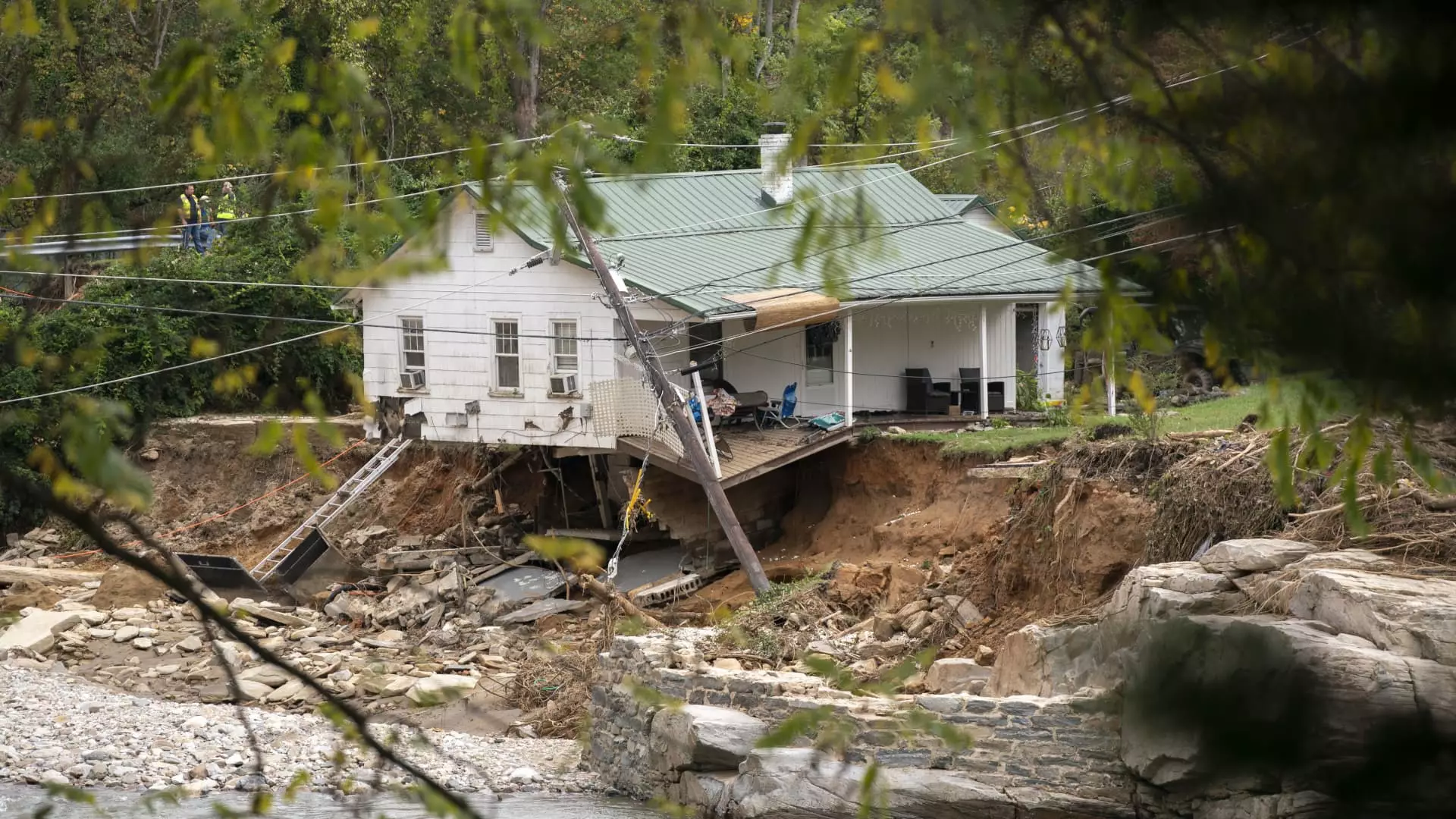Natural disasters have an insatiable capacity to wreak havoc on lives, infrastructure, and finances, with significant impacts stemming from events such as Hurricane Helene. Estimated insured losses from this devastating storm exceed $6 billion, but the reality is even grimmer when it comes to uninsured losses. Many homeowners, particularly in areas like North Carolina, were caught unprepared, primarily due to the absence of flood insurance. The complicating factor is that the majority of homes impacted by flooding during the hurricane are not classified as being in flood zones by the Federal Emergency Management Agency (FEMA). This oversight has left countless homeowners without financial protection, demonstrating a critical need for enhanced risk assessment technologies and data.
A stark contrast exists between FEMA-designated flood zones and actual flood risks. In North Carolina, for instance, only 4% of homes occupy areas that FEMA recognizes as flood zones, leading many homeowners to erroneously believe they are safe from flooding. This misleading perception is a pressing problem, as highlighted by the work of risk-assessment firm First Street. By analyzing climate change’s impact on property risk, First Street has identified that nearly 12% of homes in North Carolina face significant flood risk, contrary to FEMA’s assessments. Such discrepancies reveal a critical gap in consumer awareness and underscore the need to rethink current insurance requirements, which often fail to account for the broader implications of climate change.
Recognizing the evolving landscape of home buying, companies like Zillow have partnered with First Street to implement a revolutionary suite of climate risk data into their for-sale property listings. Buyers can now access individualized climate risk scores for flood, fire, wind, air, and heat directly on Zillow’s platform. This innovative approach aligns with shifting buyer priorities; according to a recent survey, over 80% of purchasers now consider climate risk when deciding on a property. Zillow reports that flood risk emerged as the top concern, followed by potential wildfire threats. The addition of climate data empowers buyers to make well-informed decisions, ensuring that they are fully aware of the risks associated with their prospective homes.
As climate risks become increasingly pronounced, the ramifications for home values and purchasing decisions are set to expand. First Street data indicates that the number of homes exposed to major climate risks—whether through flooding, wildfires, or other threats—has surged compared to five years ago. From August analyses, over 16.7% of new listings exhibit a high risk of wildfires, while 12.8% show substantial flooding risk. The broader implications on real estate values are profound; as potential buyers factor in insurance costs associated with climate risk, property values in high-risk areas could decline. Moreover, the market is adjusting to these realities, with potential buyers becoming more cautious as they assess both current risk and long-term projections concerning the impacts of climate change.
Education plays a pivotal role in ensuring homeowners make informed choices. The misconception that residing outside of FEMA-designated flood zones equates to safety must be rectified. Ed Kearns of First Street emphasizes that flooding can transcend these arbitrary lines, affecting homes that might be seemingly safe. Through well-crafted flood maps and risk assessments, homeowners can better understand their vulnerabilities and make sound decisions about necessary coverage.
Moreover, the integration of climate data not only benefits prospective buyers but also serves real estate agents. Empowered with reliable information, agents can effectively communicate climate risks and insurance needs to their clients, promoting a more informed real estate market. As climate realities become part of the fabric of home buying, the industry’s landscape will adapt, emphasizing a responsible approach to homeownership that prioritizes long-term sustainability and financial stability for all homeowners.
Navigating the complexities of today’s housing market requires recognizing climate risk as an integral part of ownership considerations. With innovative tools and data-driven insights, the path to informed decision-making in home buying becomes clearer, paving the way for a future where homeowners are equipped to face climate challenges head-on.

